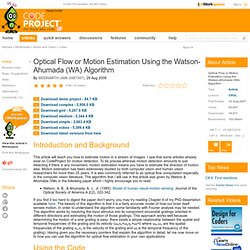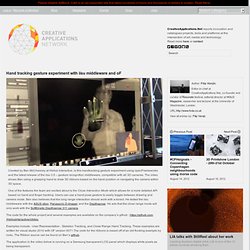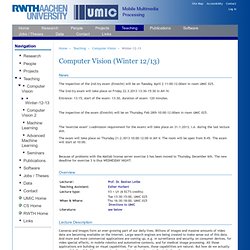

Kinect 3D Hand Tracking. Note: This page regards the demo version alone.
Please, find a library version here. This work got the 1st prize at the CHALEARN Gesture Recognition demonstration competition (Check also this link). The competition was organized in conjunction with ICPR 2012 (Tsukuba, Japan, Nov. 2012). By downloading this demo you agree to the bounds and terms described in this license. Note: You can download the 3D Hand Tracking library here. Strict system requirements: PC with at least 1 GB of RAM64bit Windows OSCUDA enabled GPU card (Compute Capability 1.0 and newer) with 256 ΜΒ of RAM and the latest drivers in place Also, if you are interested in performing a live demo, make sure that you have installed the x64 version of your RGB-D camera driver.
The demo itself is provided as an installable package of Windows binaries Kinect 3D Hand Tracking Windows 7 x64 This demo relies on a few 3rd party dependencies: Computer vision, algorithms, depth data. Patricio Gonzalez Vivo. Optical Flow or Motion Estimation Using the Watson-Ahumada (WA) Algorithm. Introduction and Background This article will teach you how to estimate motion in a stream of images.

I saw that some articles already exist on CodeProject for motion detection. To be precise whereas motion detection amounts to just detecting if there is any movement, motion estimation means you have to estimate the direction of motion also. Motion estimation has been extensively studied by both computer vision and human vision researchers for more than 25 years. It is also commonly referred to as optical flow computation especially in the computer vision literature. Watson, A. If you find it too hard to digest the paper don't worry, you may try reading Chapter 4 of my PhD dissertation available here. Kimetric. KinVi 3D: a Kinect-Enabled Virtual Interface Gadget for Windows Control. Gallery. Hand tracking gesture experiment with iisu middleware and #openframeworks. Created by Ben McChesney at Helios Interactive, is this handtracking gesture experiment using openFrameworks and the latest release of the iisu 3.5 – gesture recognition middleware, compatible with all 3D cameras.

The video shows Ben using a grasping hand to draw 3D ribbons based on the hand position or navigating the camera within 3D space. One of the features the team are excited about is the Close Interaction Mode which allows for a more detailed API based on hand and finger tracking. Users can use a hand pose gesture to easily toggle between drawing and camera mode. Ben also believes that the long range interaction should work with a kinect. He tested the iisu middleware with the ASUS xtion, Panasonic D-Imager, and the Depthsense. The code for the whole project and several examples are available on the company’s github : Examples include : User Representation , Skeleton Tracking, and Close Range Hand Tracking.
Iisu | Helios Interactive. Iisu SDK. NConnex Labs. Untitled. Computer Vision (Winter 12/13) — Computer Vision Group. News The inspection of the 2nd-try exam (Einsicht) will be on Tuesday, April 2 11:00-12:00am in room UMIC 025.

The 2nd-try exam will take place on Friday 22.3.2013 13:30-15:30 in AH IV. Entrance: 13:15, start of the exam: 13:30, duration of exam: 120 minutes. The inspection of the exam (Einsicht) will be on Thursday, Feb 28th 10:00-12:00am in room UMIC 025. The "exercise exam" (=admission requirement for the exam) will take place on 31.1.2013, i.e. during the last lecture slot. The exam will take place on Thursday 21.2.3013 10:00-12:00 in AH V. Because of problems with the Matlab license server exercise 3 has been moved to Thursday, December 6th. Overview Lecture Description Cameras and images form an ever-growing part of our daily lives. The goal of Computer Vision is to develop methods that enable a machine to "understand" or analyze images and videos.
Tentative Schedule Literature D. R. R. Multiple View Geometry in Computer Vision, 2nd Edition, Cambridge University Press, 2004 Matlab Resources.